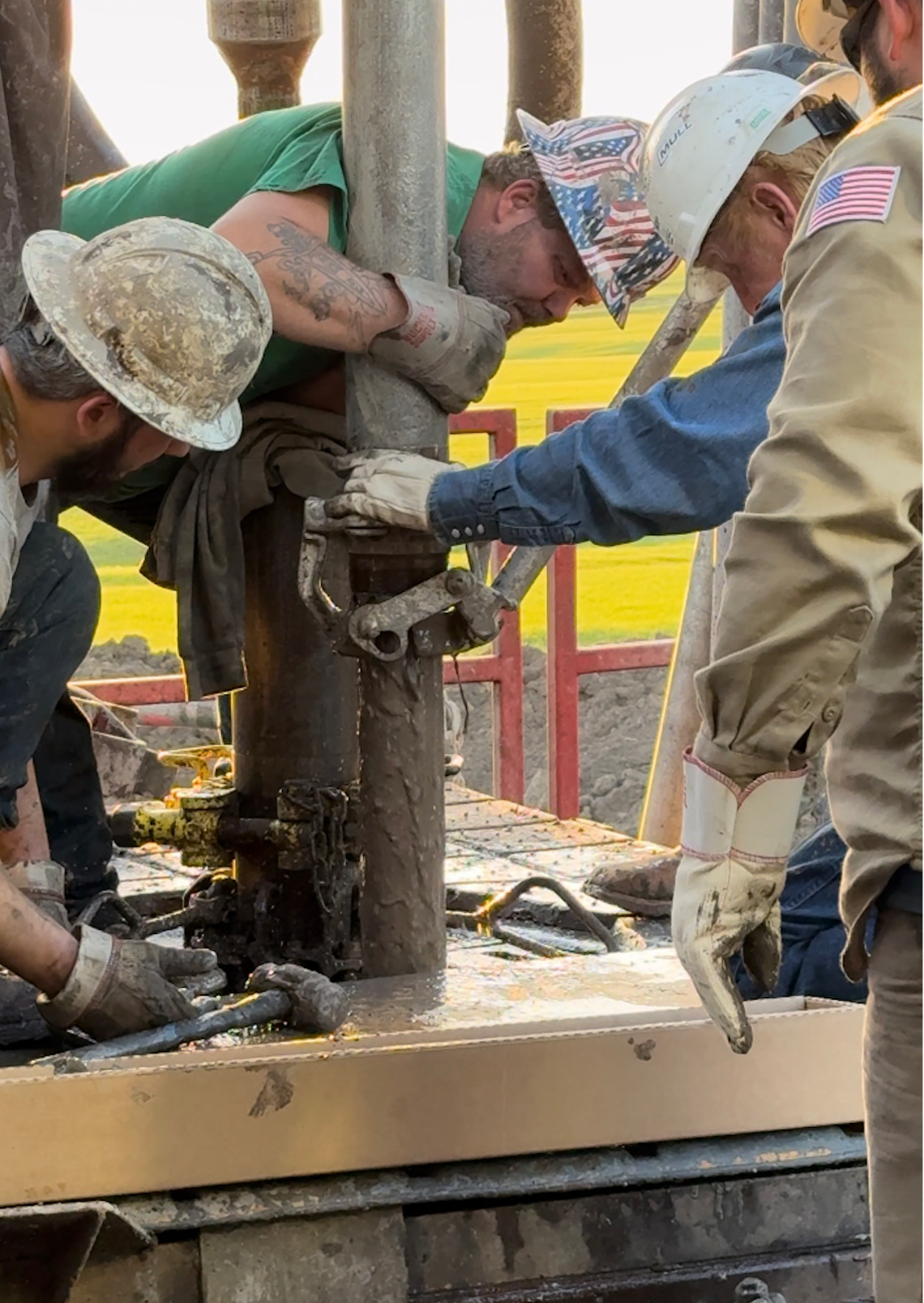KGS Assesses Potential for Critical Minerals in Eastern Kansas
LAWRENCE — The Kansas Geological Survey recently took a step toward identifying potential new sources of minerals essential for economic vitality and national security.
KGS scientists, in collaboration with independent oil and gas company Mull Companies, drilled and cored a well in Lyon County to evaluate layers of underground rock that may be enriched in critical minerals — non-fuel minerals and elements that are vital to electronics and other advanced technologies. These minerals are often obtained from overseas sources, including China and India, and are at high risk should supply lines be disrupted, as they were during the COVID-19 pandemic.
“We’re in the early stages of trying to identify where to find the different minerals and elements that are essential to energy transition, such as the minerals used in batteries to store energy produced by wind and solar farms,” said Brendan Bream, KGS associate director and senior scientist. “This project is the first step in thinking about reopening domestic sources for those critical minerals.”

The process involved collecting whole-rock core — long, cylindrical sections of rock retrieved from a wellbore— as well as lowering sensors into the hole to conduct wireline logging to better understand characteristics of the rocks, including elemental abundances, using a specialized geochemical wireline tool.
“Wireline logging gives us a relatively coarse analysis of the rock layers, compared to studies of the core itself, which allow more detailed analysis,” Bream said. “We’re evaluating whether we can use wireline logging tools to explore the subsurface without having to drill new wells and conduct high-end geochemical analyses.”
Jason Gumble, KGS scientist, is leading the effort with Weatherford Services to evaluate the geochemical wireline tool’s potential as a geochemical exploration method.
The results obtained from wireline logging will be compared to analysis of the core retrieved from the well.
“If the tool yields reliable details, we’ll be able to use it on existing wells to cost-effectively obtain a more complete picture of the regional distribution of selected elements,” Bream said.
The Lyon County well offered several advantages for the KGS scientists and their partners, including its location in a geologic area known as the Cherokee-Forest City basin. During the Pennsylvanian Subperiod of geologic time, 299 to 323 million years ago, a shallow sea extended across the region from Iowa to Oklahoma. Sediment accumulated in deeper parts — or basins — of the sea. As waters receded, deposits of limestone, sandstone, shale, and coal were left. Of particular interest in this study are the numerous layers of coal and thin black shales found in Pennsylvanian rocks.
“We can see these coals and black shales in the wireline data. By combining these data from multiple wells, we can then correlate the rocks through the subsurface and into the outcrop belt and hopefully identify sweet spots, either at depth or at the surface, for critical mineral enrichment,” said Stephan Oborny, KGS assistant scientist and the principal investigator for the study, titled “Critical minerals in coaly strata of the Cherokee-Forest City basin.” “Concentrations of certain critical minerals are quite high in these rocks and could be economically viable if we can determine how to best extract them from the subsurface.”

The KGS study is part of a wider effort across the United States to quantify and assess the abundance of critical minerals.
“We’re thinking about it in terms of finding new, local sources for industrial raw materials,” Bream said. Manufacturing plants, for example, could benefit from tapping domestic sources of the materials needed to produce their products. “There’s security in having a domestic source. And there are economic advantages to keeping it local.”
The information obtained from the Lyon County core and wireline logs will help scientists understand the geology related to critical minerals and build a predictive model to assist in locating additional deposits of the minerals in the future.
“The KGS is fortunate to have this partnership with an oil and gas operator in this part of the state,” Bream said. “They already had plans to do this work in the county and allowed us to piggyback on their well plan. As a result, we obtained close to 120 feet of four-inch diameter core and will be analyzing it using a variety of methods over the next several months, including using a multi-sensor core scanner and high-precision geochemical analyses.”
The core retrieved from the Lyon County well will be stored at the KGS for further studies. The KGS is home to one of the most extensive public collections of drill cores in the United States, housing 70,000 boxes containing hundreds of thousands of feet of rock samples.
The KGS critical minerals research is funded by the Department of Energy and includes collaborators from Missouri, Nebraska, Iowa, Oklahoma, and the Osage Nation. Industry partners, in addition to Mull and Weatherford Services, include Lighthouse Drilling, Kudu Coring, and ELI Wireline.
The Kansas Geological Survey is a non-regulatory research and service division of the University of Kansas. KGS scientists study and provide information about the state’s geologic resources and hazards, including groundwater, oil and natural gas, rocks and minerals, and earthquakes.